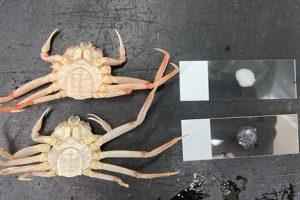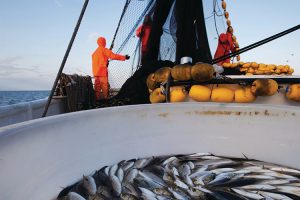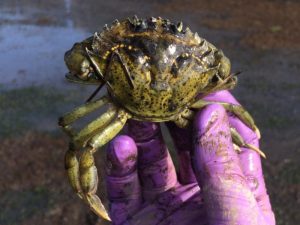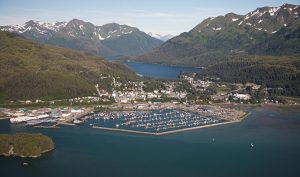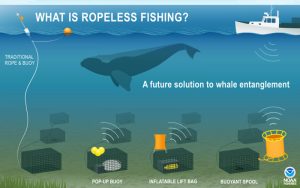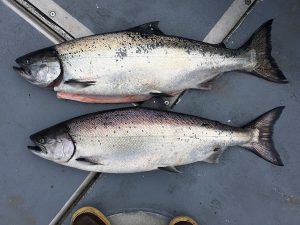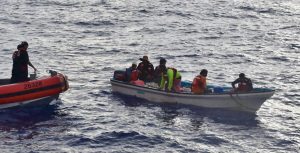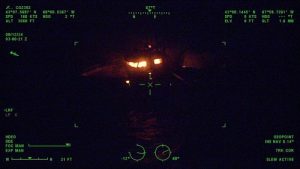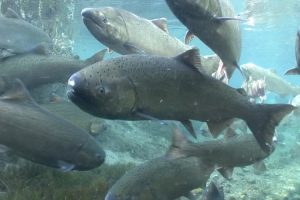Three Rescued after Scallop Boat Capsizes
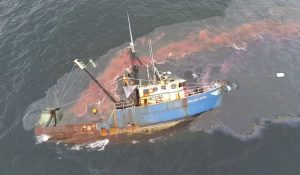 On April 11, 2025, a commercial scallop boat capsized near Green Island in Boston Harbor. A swift rescue and a coordinated environmental response began after the vessel started leaking fuel into area waters.
On April 11, 2025, a commercial scallop boat capsized near Green Island in Boston Harbor. A swift rescue and a coordinated environmental response began after the vessel started leaking fuel into area waters.
At 7:46 a.m., watchstanders at U.S. Coast Guard Sector Boston received a broken radio transmission from the F/V EILEEN RITA, a 90-foot vessel homeported in New Bedford, Massachusetts. They soon established communication with the captain, who confirmed the vessel had run aground on rocks near Green Island and was taking on water. The vessel began listing onto its side, prompting the three crew members to don survival suits and climb onto the gunwale, approximately 15 feet above the waterline while awaiting rescue.
Body camera footage released by police shows the crewmembers sliding down the side of the listing vessel and boarding a Boston Police boat. They were later evaluated by Boston EMS.
 Maritime Injury Law Blog
Maritime Injury Law Blog


